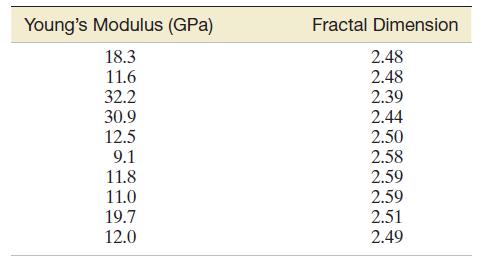Characterizing bone with fractal geometry. In Medical Engineering & Physics (May 2013), researchers used fractal geometry to
Question:
Characterizing bone with fractal geometry. In Medical Engineering & Physics (May 2013), researchers used fractal geometry to characterize human cortical bone.
A measure of the variation in the volume of cortical bone tissue—called fractal dimension—was determined for each in a sample of 10 human ribs. The researchers used fractal dimension scores to predict the bone tissue’s stiffness index, called Young’s Modulus (measured in gigapascals).
The experimental data are shown in the first column.
Consider the linear model E1y2 = b0 + b1x, where y = Young’s Modulus and x = fractal dimension score.
Find an interval estimate of the increase (or decrease) in Young’s Modulus for every 1-point increase in a bone tissue’s fractal dimension score. Use a confidence coefficient of .90.
Step by Step Answer:

Statistics Plus New Mylab Statistics With Pearson Etext Access Card Package
ISBN: 978-0134090436
13th Edition
Authors: James Mcclave ,Terry Sincich






